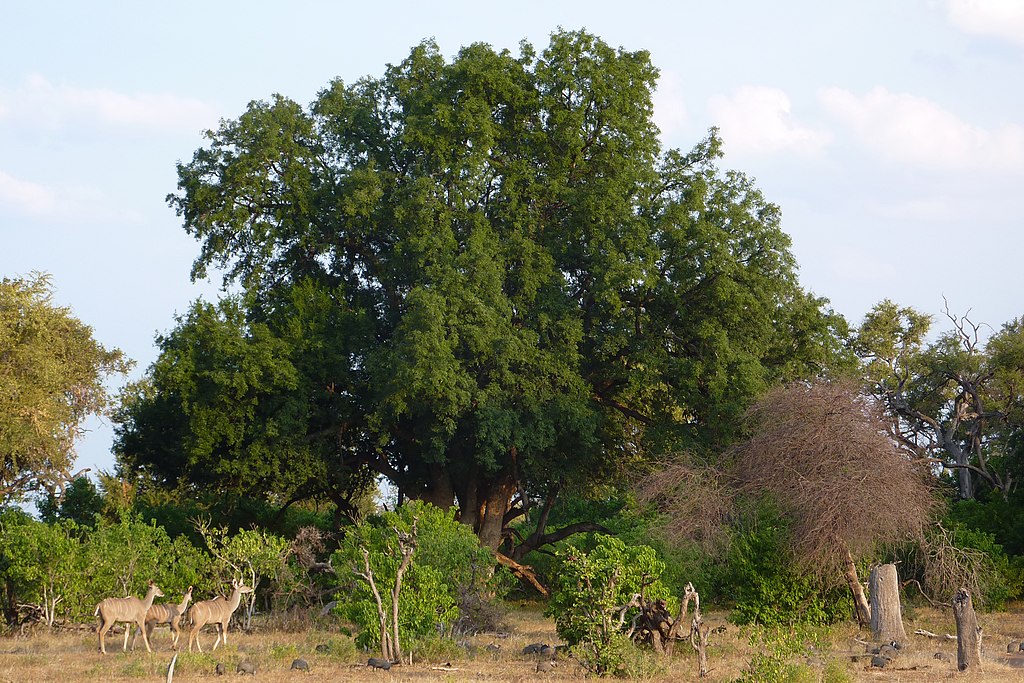Nyala Tree (Nyalabessieboom) #
Xanthocercis zambesiaca

Quick Info #
- Distribution & habitat: Botswana, Mozambique, Swaziland, Zimbabwe, Zambia, and parts of Limpopo and Mpumalanga – dry, hot bushveld, on deep alluvial soils close to rivers and on termitaria
- Family: Fabaceae
- Florescence: September to December
- Fruiting: -
- Leaf habit: evergreen
- Name origin: “xanthos” means “yellow”, “cercis” refers to the genus Cercis, and “zambesiaca” means “of the Zambezi region”.
- Other names: hoenderspoor, moladi (Setswana), mutshato (Tshivenda), umhlwati (siSwati)
Description #
The nyala tree is a big, slow grower – standing up to 30m tall and sporting a very wide, dense crown. With age, the stout trunk becomes grooved and depressed, and the bark does not peel off. The tree’s drooping, glossy leaves are of a dark green colour.
The fragrant flowers are small and white to creamy in colour. They have a scent similar to that of roses. The fully-grown fruits are smallish and ovoid, containing a white and slightly flour-like pulp under its thin, smooth and shiny peel.
Uses & Ecology #
The nyala tree’s great size makes it ideal for providing shade. Insects pollinate the tree, apes and birds eat the fruits, and game browses the leaves. People can also eat the fruit, but it does not taste great. It is eaten fresh or dried and ground into a meal.
Traditional uses include treatment of diabetes mellitus. The tree is also harvested for its wood.
References #
- Fern, K. (2024) Xanthocercis zambesiaca. Available at: https://tropical.theferns.info/viewtropical.php?id=Xanthocercis+zambesiaca (Accessed on: 12 November 2025)
- Ngwenya, W.V. (2019) Xanthocercis zambesiaca. Available at: https://pza.sanbi.org/xanthocercis-zambesiaca (Accessed on: 12 November 2025)
- Van Wyk, B & P. (1997) Field Guide to Trees of Southern Africa. Cape Town: Struik Publishers.
- Van Wyk, P. (1988) Veldgids tot die Bome van die Nasionale Krugerwildtuin. Cape Town: Struik Publishers.
Caution: Consult a qualified health practitioner before considering medically using or ingesting any plant parts. Any mentioned traditional uses are based on cultural practices and anecdotal evidence. They are not necessarily clinically proven or supported by modern scientific studies.